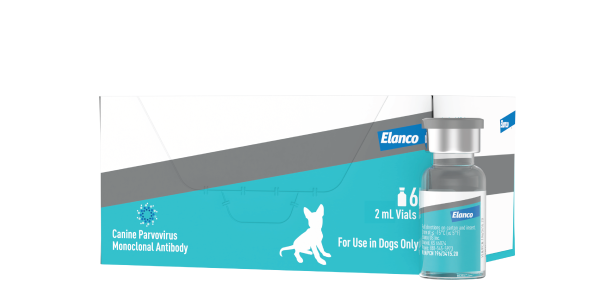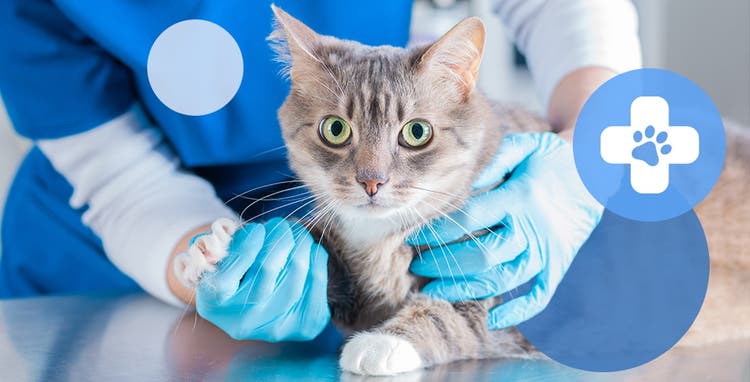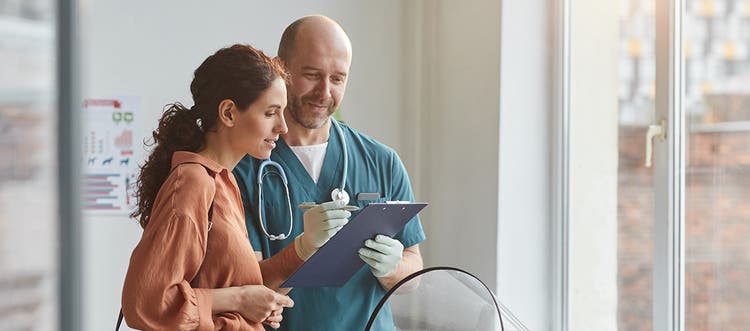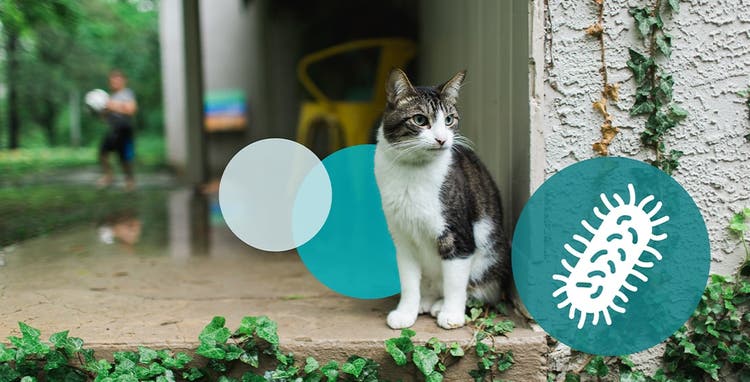Hearing that your dog has been diagnosed with canine parvovirus can be devastating. As one of the most serious and life-threatening illnesses a dog can contract, parvo has historically meant a long, hard road of intensive medical care with no guarantee. Luckily, new advancements in the treatment of canine parvovirus have increased the odds of a dog’s or puppy’s survival.
Understanding Canine Parvovirus
Parvo is a highly contagious gastrointestinal virus that can affect all dogs, though it overwhelmingly affects puppies and unvaccinated or incompletely vaccinated dogs from 6 weeks to 6 months of age.1 Parvo targets the gastrointestinal tract and bone marrow, causing severe intestinal damage and bleeding. It also destroys immune cells, which increases the chance of secondary infections.2
Early signs of parvovirus include loss of appetite, vomiting, lethargy, bloating, fever and diarrhea. Because parvo can quickly become deadly, it is imperative to seek medical attention for your dog immediately if you see signs of parvo.
A dog can catch parvo through direct contact with infected dogs, feces, vomit, exposed environments and items, and caretakers. Parvo is very hardy and is resistant to many common disinfectants. In fact, the virus can remain active in the environment for more than one year.3 Additionally, CPV-2 (the specific strain that affects our dogs today) is known to infect other mammals such as raccoons, cats, coyotes and wolves.3
How Is Parvo Treated?
Since the 1970s, parvo has spread worldwide with no cure. Traditionally, the approach to treating parvo has been intensive supportive care and isolation. This includes:
- IV fluids to limit dehydration and correct electrolyte imbalances
- Medication to alleviate vomiting, diarrhea, pain and additional infections due to a decrease in immune function.
- Isolation to avoid infecting others — veterinary staff will take extreme precautions to prevent the spread of parvo to other areas of the clinic or hospital.
In some cases, your dog may begin to lose a concerning amount of weight, and your veterinarian may choose to place a nasogastric tube to deliver liquid nutrition directly to your dog’s stomach.
How Long Does It Take to Treat Parvo?
Unfortunately, most parvo cases require intensive medical care for long periods, which can be an added burden of emotional stress on the pet and more expense on the pet parent.
Any hospitalization can take a toll on your pet’s emotional well-being, even under the best conditions. While your veterinarian’s goal is to get their patient home as quickly as possible, they must also ensure the dog is well enough to thrive there.
How Deadly Is Parvo?
Unfortunately, canine parvovirus can be fatal, especially in puppies. Due to the quick nature of the virus and the severity of symptoms, death can occur within two to three days after signs of parvo appear.2
Historically, the survival rate for parvo has been grim — up to 91% of infected dogs may die if the virus is left untreated.5 Before the creation of Canine Parvovirus Monoclonal Antibody, pet parents of affected dogs could expect lengthy hospital stays, intensive care and, in most cases, a big bill. However, CPMA has been shown to dramatically increase the survival rate of dogs with parvo. Dogs treated with CPMA had a 100% survival rate when the therapy was administered as the sole therapy in the treatment efficacy study.4
New Developments in Treating Parvo
In early 2023, the United States Department of Agriculture (USDA) granted conditional license approval for the Canine Parvovirus Monoclonal Antibody (CPMA) to be used in the treatment of parvo in dogs. This gamechanger is the first and only approved therapy for the treatment of canine parvovirus and may help your dog feel better faster and get home sooner.4
CPMA is specifically designed to bind directly to active parvovirus in your dog, preventing the virus from infecting healthy cells and proliferating the debilitating symptoms of the illness. The treatment decreases the severity and duration of symptoms associated with parvo4 and targets and disables the virus to give your dog the best possible chance of making it home safely and more quickly.
So what does this mean for your dog? After your veterinarian administers CPMA, the therapy goes to work by binding the virus and stopping the damage it would normally cause. This means a dog treated with CPMA may experience less vomiting and diarrhea, less damage to their internal organs and immune system, less fatigue, less chance of secondary infection, and most importantly, less time in the hospital.4 In other words, the sooner your dog receives the antibody therapy, the sooner they can recover and come home to you.
Why Should I Vaccinate My Dog for Parvo?
Vaccination is the most effective way to prevent your dog from getting parvo, and you should follow your veterinarian’s recommendations for both new puppy vaccines and ongoing prevention. Keep in mind that puppies are at high risk until they complete their full vaccination protocol (typically multiple rounds of vaccine) and gain immunity to the virus. While nursing, puppies gain immunity from their mother. Unfortunately, the immunity from their mother interferes with vaccine efficacy. The period when the immunity acquired from the mother wanes and before the puppy achieves immunity through vaccination creates a window of risk in which puppies can catch parvo.
If you’ve ever owned a dog — especially a puppy — you’ve likely heard about parvo and the devastating effects it can have on your pup. Until now, your vet may have prepped you for the worst when giving you the news, setting expectations for the long road ahead. However, with the introduction of Canine Parvovirus Monoclonal Antibody treatment, your veterinarian now has access to the first USDA conditionally approved treatment targeting parvo directly.
If you suspect your precious pup has parvo, get them to the clinic as soon as possible and ask your vet about using Canine Parvovirus Monoclonal Antibody to treat your pup and get them home sooner.
References
- Sykes JE, et al. Canine Parvovirus infectious and other viral enteritides. Canine and Feline Infectious Disease. 1st ed. 2014: 141-151.
- American Veterinary Medical Association. (n.d.) Canine parvovirus. https://www.avma.org/resources-tools/pet-owners/petcare/canine-parvovirus.
- Mazzaferro EM. Update on Canine Parvoviral Enteritis. Vet Clin North Am Small Anim Pract. 2020 Nov;50(6):1307-1325. Doi: 10.1016/j.cvsm.2020.07.008. Epub 2020 Sep 2. PMID: 32891439; PMCID: PMC7467068.
- Elanco Animal Health. Data on file.
- Venn, E.C. et al. Evaluation of an outpatient protocol in the treatment of canine parvoviral enteritis. Journal of Veterinary Emergency and Critical Care. 27(1) 2017, 52-65. Doi: 10.1111/vec.12561.
Elanco, and the diagonal bar logo are trademarks of Elanco or its affiliates.
Always read, understand and follow the label and use directions.

Canine Parvovirus Monoclonal Antibody
While vaccination can help prevent parvo, there have been no antiviral treatment options for dogs who become infected — until now. Canine Parvovirus Monoclonal Antibody (CPMA) is the first and only USDA-conditionally approved, one-dose parvovirus treatment.







